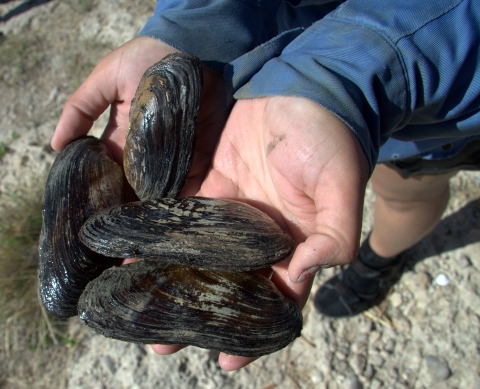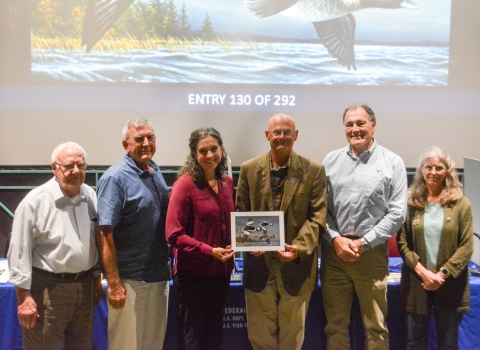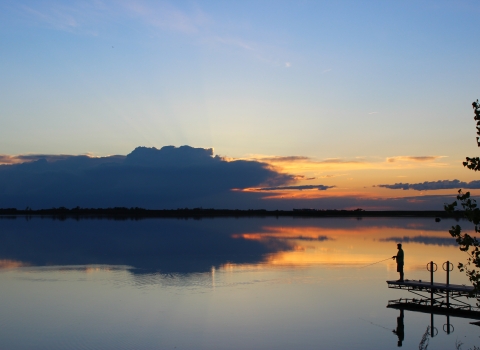The U.S. Fish and Wildlife Service has approved a recovery plan for the Texas hornshell, a freshwater mussel native to the Rio Grande drainage in Texas, New Mexico, and northern Mexico. The
recovery plan establishes downlisting and delisting criteria for the Texas hornshell, which was listed as endangered on Feb. 9, 2018.
The overall strategy for recovering the Texas hornshell involves stemming any further range contraction in existing stream populations; restoring/managing watersheds and stream habitat to support additional resilient stream populations; and increasing genetic diversity within those stream populations. Successful recovery efforts will continue to involve cooperation and collaboration among Federal, State, and local agencies, private entities, and other stakeholders.
“Working closely with our partners including the New Mexico Department of Game and Fish, Texas Parks and Wildlife Department, The Nature Conservancy, the Bureau of Land Management, the Center of Excellence and New Mexico State Lands Office, we will implement actions in the recovery plan to conserve the Texas hornshell,” said Amy Lueders, the Service’s Regional Director. “These efforts will benefit the hornshell and the communities that depend on the streams and rivers the hornshell calls home.”
While they are not regulatory, recovery plans provide a framework for the recovery of a species so that Endangered Species Act protection is no longer necessary. The recovery plan describes actions that are considered necessary for recovery of the Texas hornshell, establishes downlisting and delisting criteria, and estimates the time and cost to implement recovery actions for the species. Downlisting of the Texas hornshell can be considered when, in part, six healthy stream populations exhibit evidence of reproduction and positive or stable population trends over 45 years, and delisting the species will be considered when, in part, at least seven healthy stream populations have remained stable or increasing for an additional 45 years.
The Texas hornshell is a medium-sized freshwater mussel that has a dark green-brown, elongated, laterally compressed shell reaching lengths of over 110 millimeters (mm). They are thought to live 15 years or more and occur mostly in medium-to-large swift water, bedrock systems. The Texas hornshell historically occurred in the Pecos River System to the confluence with the Rio Grande. Within the Rio Grande System, it occurred from Brewster County, Texas downstream to just below the current location of Falcon Dam, Starr County, Texas. This includes the Devils River, Las Moras Creek, and the Rio Salado, tributaries to the Rio Grande.
The Texas hornshell has declined significantly in its overall distribution and currently occupies small segments of the Black and Delaware rivers in the Pecos River drainage in New Mexico. In Texas, the hornshell is found in the Rio Grande System downstream of Big Bend National Park in the Lower Canyons, to above Amistad Reservoir in Langtry; in the Middle Rio Grande from Del Rio to Laredo; and in the Devils River in Val Verde County. Survey work conducted in 2017 revealed an additional population of Texas hornshell in Rio San Diego near Jimenez, Coahuila, Mexico.
The Texas hornshell is considered in danger of extinction throughout its entire range based on the immediacy, severity, and scope of the threats from the loss of habitat due to fragmentation and reduced water quantity and quality. The species has declined significantly in overall distribution and currently occupies only approximately 15% of its historical U.S. range.
America’s fish, wildlife, and plant resources belong to all of us, and ensuring the health of imperiled species is a shared responsibility. We’re working to actively engage conservation partners and the public in the search for improved and innovative ways to conserve and recover imperiled species.




